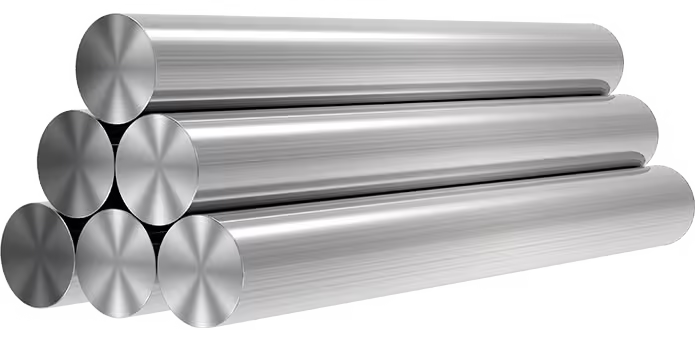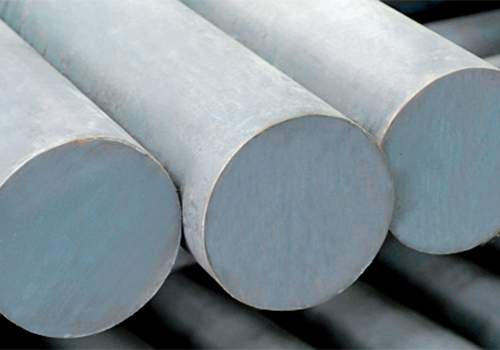
Exploring the Versatility of Steel Alloy 1020
Introduction
Steel alloy 1020, also known as AISI 1020 or SAE 1020, is one of the most popular low-carbon steel alloys used in industries around the world. Its excellent machinability, balance of strength, and ductility make it highly versatile for a range of applications, including in automotive, construction, and manufacturing sectors. In this blog, we will explore the key properties of steel alloy 1020, its various applications, and what makes it such a reliable material for numerous industrial uses.
By the end of this article, you’ll have a deep understanding of why steel alloy 1020 is a preferred choice in many industries and how it stands out from other alloys.
What is Steel Alloy 1020?

Chemical Composition and Characteristics
Steel alloy 1020 is primarily composed of carbon and iron, with a carbon content of about 0.18-0.23%. The relatively low carbon content results in a material that is easy to machine and form while retaining enough strength for many practical uses.
Key components in steel alloy 1020 include:
- Carbon (C): 0.18-0.23%
- Manganese (Mn): 0.30-0.60%
- Phosphorus (P): Max 0.040%
- Sulfur (S): Max 0.050%
These elements work together to give steel alloy 1020 its unique properties: excellent machinability, good weldability, and the ability to be hardened through heat treatment.
Physical and Mechanical Properties
Steel alloy 1020 exhibits a combination of tensile strength, elongation, and impact toughness, making it ideal for various industrial applications. Below are some of the mechanical properties of steel alloy 1020:
- Tensile Strength: 394-441 MPa
- Yield Strength: 294-345 MPa
- Elongation: 15-30% (depending on treatment)
- Hardness: Typically 111 Brinell Hardness (HB)
These characteristics allow it to be used in applications where forming, bending, and machining are essential.
Applications of Steel Alloy 1020
Automotive Industry
One of the primary industries that rely on steel alloy 1020 is the automotive sector. Thanks to its combination of strength and formability, this alloy is frequently used in parts that require both ductility and toughness.
Common applications include:
- Crankshafts
- Steering components
- Engine parts
- Transmission gears
The ability to machine steel alloy 1020 into complex shapes makes it ideal for these high-stress components.
Construction and Structural Components
Steel alloy 1020 is also widely used in the construction industry, where it is used in structural components, including beams, frames, and columns. Its ability to withstand stress and strain under heavy loads makes it a reliable material for creating durable structures.
Examples of construction applications:
- Support beams
- Columns
- Structural brackets
Given its cost-effectiveness and mechanical properties, steel alloy 1020 is a go-to material in building infrastructures that require moderate strength and high durability.
Machinery and Equipment Manufacturing
Steel alloy 1020 is a popular choice for manufacturing machinery components due to its versatility in machining and forming. The alloy is used in making gears, shafts, and other parts that need to perform consistently under dynamic loads and stresses.
- Agricultural machinery
- Industrial machinery gears and shafts
- Hydraulic machinery parts
Its ability to withstand wear and tear while maintaining performance makes steel alloy 1020 indispensable in machinery production.
Heat Treatment and Hardening
One of the most significant advantages of steel alloy 1020 is its adaptability to heat treatment processes. Heat treatment improves the hardness and strength of the material, making it suitable for applications where higher tensile strength is required.
- Annealing: Reduces internal stress and softens the alloy for better machinability.
- Case Hardening: Improves surface hardness while maintaining a ductile core.
- Quenching and Tempering: Enhances toughness and strength.
The ability to tailor the mechanical properties of steel alloy 1020 through heat treatment expands its range of uses across multiple industries.
Comparison of Steel Alloy 1020 with Other Common Alloys
In this section, we will compare steel alloy 1020 with other popular steel alloys to highlight its versatility and application range.
| Alloy | Carbon Content | Yield Strength | Tensile Strength | Common Applications |
|---|---|---|---|---|
| Steel Alloy 1020 | 0.18-0.23% | 294-345 MPa | 394-441 MPa | Automotive parts, construction, machinery |
| Steel Alloy 1045 | 0.42-0.50% | 450-655 MPa | 585-705 MPa | Gears, axles, bolts |
| Steel Alloy 4140 | 0.38-0.43% | 655-800 MPa | 950-1000 MPa | Heavy-duty industrial applications |
| Steel Alloy 1018 | 0.14-0.20% | 220-300 MPa | 370-440 MPa | Cold-formed products, structural bars |
This table highlights that while steel alloy 1020 does not possess the highest tensile or yield strength compared to other alloys, its combination of properties—such as machinability, weldability, and versatility—make it a strong contender in a wide range of industries.
Advantages of Using Steel Alloy 1020

Excellent Machinability
One of the main reasons why steel alloy 1020 is highly regarded is its excellent machinability. This makes it easy to cut, drill, or form into the desired shape, reducing the time and effort required in manufacturing processes. Machinability is crucial in industries where quick production is essential.
Cost-Effective Material
Compared to higher carbon or alloy steels, steel alloy 1020 is a cost-effective option for applications where moderate strength and toughness are required. Its lower price, combined with ease of use, makes it a popular choice for mass production.
Good Weldability
Another significant advantage of steel alloy 1020 is its weldability. It can be welded easily using standard welding techniques, which reduces the need for specialized equipment or processes. This is particularly important in industries like construction and automotive manufacturing.
Versatile Heat Treatment Options
As mentioned earlier, 1020 alloy steel responds well to various heat treatment processes, allowing it to be customized for different applications. Whether you need enhanced surface hardness, increased toughness, or stress-relieved properties, this alloy can be tailored to meet specific performance requirements.
Durability and Reliability
Despite being a low-carbon steel, 1020 alloy steel provides sufficient strength and toughness for a wide range of applications. Its durability ensures that parts made from this alloy can withstand everyday wear and tear, contributing to longer service life.
Conclusion
Steel alloy 1020 is one of the most versatile materials in the steel industry today, providing a balance of strength, ductility, machinability, and cost-effectiveness. Its wide range of applications, from automotive parts to construction and machinery, highlights its importance in modern manufacturing. Whether you’re looking for a material that can be easily machined or one that can be heat treated for additional strength, steel alloy 1020 is an excellent choice.
As industries continue to evolve, 1020 alloy steel will remain a reliable material for meeting the growing demands of various sectors.
FAQ
What is the main composition of 1020 alloy steel?
1020 alloy steel primarily contains carbon (0.18-0.23%) and manganese (0.30-0.60%), along with traces of other elements like phosphorus and sulfur.
Can 1020 alloy steel be heat treated?
Yes, 1020 alloy steel responds well to heat treatment processes such as annealing, case hardening, and quenching, allowing customization of its properties.
What industries commonly use 1020 alloy steel?
Steel alloy 1020 is widely used in industries such as automotive manufacturing, construction, and machinery production due to its balance of strength, machinability, and cost-effectiveness.
Is 1020 alloy steel suitable for welding?
Yes, 1020 alloy steel has good weldability and can be welded using common welding techniques without the need for specialized equipment.
How does 1020 alloy steel compare to other low-carbon steels?
Compared to other low-carbon steels, 1020 alloy steel offers a unique balance of machinability, durability, and versatility, making it a preferred choice for many applications.






